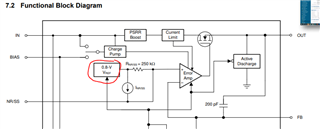Hi Support Team,
For our of our product we are planning to use TPS7A5201QRGRRQ1. We are concern on the accuracy part. From the datasheet we have taken the below snapshot
Please help me to understand how this accuracy is derived. What is the test condition?. whether any feedback gain setting resistors used or it is 0.8V fixed
Whether this accuracy includes line regulation, load regulation and temperature variation?
Also pls. note that we are using without Bias configuration




